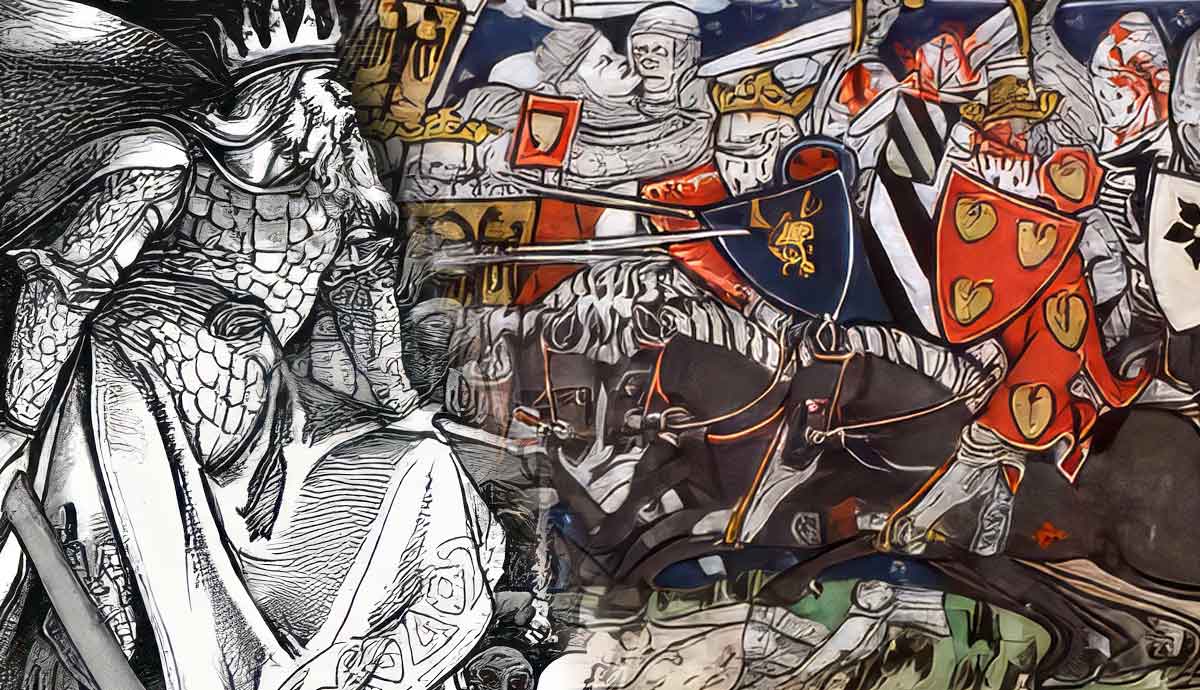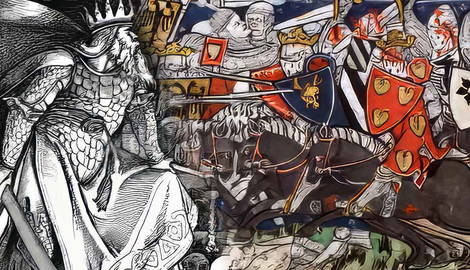
The Battle of Châlons, also known as the Battle of the Catalaunian Plains, is one of the most famous battles of the ancient world. Many considered it a watershed moment, in which the combined Roman-Germanic forces stopped the onslaught of the Huns. The two opposing commanders, the Roman general Flavius Aetius and the infamous Attila the Hun, both played important roles in the battle, which happened to be their last major conflict. Traditionally, the Battle of Châlons represented the clash of civilizations between civilized Rome and nomadic warriors, inspiring countless artists, scholars, and writers. The last victory, before “the fall of Rome.” However, nowadays, we know that the battle was a much more complex affair.
The Opposing Forces at the Battle of Châlons (Battle of the Catalaunian Plains)

The Battle of Châlons (Battle of the Catalaunian Plains) took place in 451 CE, near present-day Châlons-en-Champagne in France, then Roman Gaul. Interestingly, this was the same region where another important battle took place two centuries earlier, between emperor Aurelian and the leader of the Gallic Empire, Tetricus. Unlike the earlier conflict, where both sides consisted of Roman troops, the opposing forces at the fifth-century Battle of Châlons were the Roman-Germanic army under the overall command of general Flavius Aetius, and the Huns, led by Attila the Hun. Aetius’ main ally was Visigoth king Theodoric I, who also happened to be his former rival. The former enemies of Rome – Visigoths, Franks, Burgundians, and Alans – were now Aetius’ crucial allies.
The Uneasy Coalition at the Battle of Châlons

Flavius Aetius was an experienced general, with years of relentless campaigning behind him. Ironically, Aetius fought mainly against the Visigoths, who for decades contested Roman control of Gaul. Yet, he knew well that the Roman forces alone could not stop the Hunnic advance. The man known as the “last Roman” had no choice but to ask his former enemies for help. The barbarians accepted, as they, too, could not overcome Attila the Hun. The solution was an uneasy alliance between Aetius and Theodoric. Former rivals now had to cooperate to stop the common enemy.
Aetius and Attila the Hun Were Former Allies

To make things worse, the Huns were led by no one other than Attila the Hun, who knew the Roman tactics well. Before the Battle of Châlons, his Hunnic warriors fought aside the Romans! In fact, Aetius seized the most important position in the Western Roman Empire – the magister militum – by winning battles in Gaul. And in those battles, Aetius’ crack troops were aided by the Attila’s horse-archers. In addition, Aetius and Attila knew each other well, as Aetius spent his exile as a hostage on the Hunnic court.
Aetius Forced Attila the Hun into a Pitched Battle

With a large army under his command, all Aetius had to do was to force Attila into a pitched battle. The opportunity presented itself in 451 AD, following the failed siege of the Roman city of Aurelianum (modern-day Orleans). On June 20th, the opposing forces met on the Catalaunian Plains, north of the town now known as Troyes. The open plains allowed for maneuverability and facilitated the deployment of cavalry units, a strength of the Huns and the Roman-led coalition. The only high ground in the vicinity was a hill that dominated Attila’s left flank. This made control of the hill of paramount importance for both sides.
The Battle of Châlons Was a Bloodbath

Like many Roman battles, the Battle of Châlons was marked by fierce and bloody combat. Both sides fought fiercely, leading to heavy casualties on both ends. The battle witnessed intense hand-to-hand combat, archery volleys, and charges by cavalry units. As the Roman army consisted mainly of infantry, it was the Visigoth heavy cavalry that led the charge on the Hunnic positions. The Visigoths took control of the hill, giving Aetius a strategic advantage, but suffered heavy losses in the process, including king Theodoric, who perished on the battlefield. However, this only further inspired his men, who pushed the Huns back. By the end of the day, Attila and his warriors found themselves surrounded and at the mercy of Aetius. Who instead finishing them off, let the Huns go!
It Was Also a Stalemate

In fact, for Aetius, the stalemate was the best outcome. After all, the Visigoths had been the main Roman antagonist in Gaul for decades, and the alliance was only a temporary arrangement. The decision to allow Attila’s army to withdraw caused consternation among Roman barbarian allies, and Theodoric’s son Thorismund (the new king of the Visigoths) openly opposed Aetius. But Aetius, a shrewd politician, convinced the young monarch to return home to consolidate his position against his brothers, potential rivals.
Battle of Châlons (Catalunian Plains) Was Aetius’ Triumph

The Battle of Châlons was not a decisive victory, but for Flavius Aetius, it was a triumph. Besides defeating and humiliating Attila the Hun, Aetius also weakened the Visigoths, allowing the Romans much-needed respite. Further, by keeping the Roman troops out of the battle, Aetius managed to preserve the only existing Roman army in the region, and with it, at least for the time being, Gaul remained in the Roman hands. However, Aetius’ death in 454, at the hands of Emperor Valentinian III, negated all his successes, and twenty years after the bloodbath at the Catalaunian Plains, the Roman West disintegrated, with barbarian successor kingdoms rising in its place.










